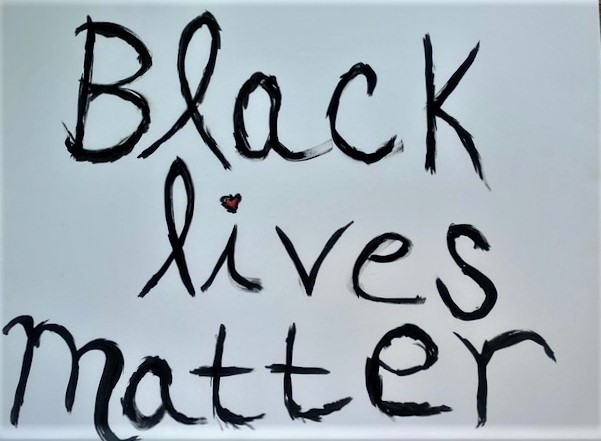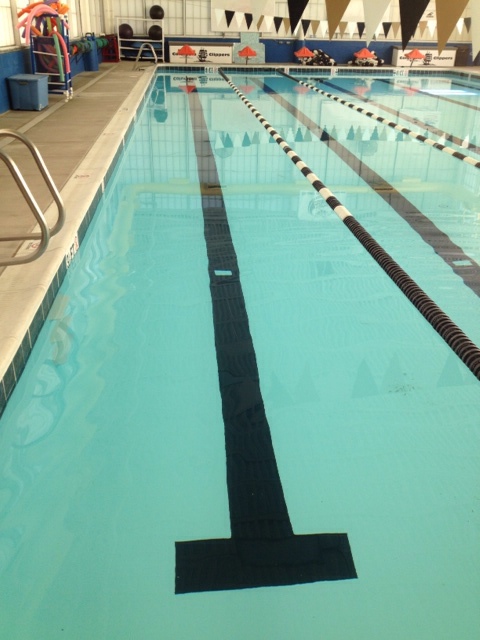
Black Lives Matter and silence is not an option.

Black Lives Matter and silence is not an option.

When I first decided that I was going to stay at home and practice social distancing, it was a decision I made with complete clarity, and one that felt almost patriotic. I had been reading about the alarming aspects of the spread of the novel coronavirus and of course its high mortality rates. But, it was the news out of Italy that was most sobering. The news that the current medical infrastructure in any country would be, as it was in China’s and Northern Italy’s cases, unable to keep up with the number of infected people needing care at the height of the outbreak. That was eye opening and mindset changing for me. It meant that the most important thing that I could do and must do was to stay at home and reduce my exposure to people.
My first act as a social distancer was to inform my husband that I would not be going to the Lyric for the Beatles tribute band concert, but he was free to go if he wanted to go. He was very supportive. A little surprised, but supportive. He ended up giving the tickets away to someone in his office, who had a great time. My next efforts were not so clear cut or successful. I am a U.S. Masters Swimmer and belong to the Columbia Masters group. We swim mostly at the Swim Center. I knew that given the schedules of my “lane mates,” I would be swimming in a lane by myself at the next practice I would normally attend. Swimming is my sanity. So, how could I stay home when I figured I’d be social distanced enough…

Indoor Pool
Well, I was so conflicted it hurt. I did end up swimming. In a lane by myself. Social distance seemed to be achieved. But I did not feel great about being out. Next up, another opportunity to social distance. I attend a weekly meeting that is also not overcrowded and opportunities to space myself away from others are available. I ended up going there too. But, by now, I am racked with guilt. And shame. I was not being very good at sticking to my decision to stay at home. Then, just to put the icing on the cake, well-meaning folks were all over social media talking about still going to restaurants and making sure they lend a hand of support to small business. My husband came home from work and said, “Let’s grab something to eat out somewhere.” I knew that was not what I wanted to do, because that was not social distancing. It was going into a group of people, who had been going about their business and not staying at home. So, the final test failure of the day was going to dinner at Chipotle. In my mind I was thinking that, “OK, this means that my 10-14 day isolation to make sure I’m not carrying the virus has now been set back the whole day, and I’m not being a very good citizen.”
Meanwhile, I am still reading reports of the spread of the virus and efforts being made overseas to stem that spread. It is very clear that the best way to do that is to keep people from being around other people. When I woke up the following morning I was in an uncluttered mental place with the staying at home decision. And, thankfully, it was one that was unencumbered by opportunities to undertake the bartering and justifying I had done the previous day. In fact, I was almost giddy at the opportunity to do my part, which still seems woefully small and insignificant in the face of the trials facing many Europeans and a small number of Americans now. However, I know from all the reading I’m doing it is not insignificant. It’s lifesaving and hopefully catastrophe-saving.
I am unable to stop noticing how similarly the efforts to stem the most serious impacts of climate change mirror efforts being made to stem the most serious impacts of the novel coronavirus (COVID-19).
With regard to climate change we have been saying (for a very, very long) time, that we must act. We encourage individuals to do their part: refuse single use plastics by carrying their own reusable bags and bamboo utensils and straws everywhere they go, reduce consumption, reuse, repurpose, and recycle ♻️ recycle ♻️ recycle ♻️. We implore governments, businesses and corporations to believe the science and take bold actions to reduce their carbon footprints; to follow the recommendations of the scientists and environmentalists. We know that every individual action can and does make a positive difference in our collective efforts to save the planet from the most horrible impacts of climate change. We know from history that individual actions when taken together push governments, businesses and corporations to take actions they otherwise wouldn’t take. We are now in a climate crisis or climate emergency because action has been slow to achieve to tip the scales that move those bigger GHG emitters. Time is of the essence. Every minute and every climate action matters.
With regard to the novel coronavirus, we are hearing that we must act. We as individuals must follow science-based recommendations regarding washing our hands: with soap and warm water for twenty seconds or as long as it takes you to sing Happy Birthday to yourself. We must also not touch our faces (so shocked at how often I touch my face!). And, also important, to not go out if you are sick; and self-quarantine if you’ve been exposed to the virus. We are hearing that businesses, governments and corporations must do more: provide more testing and make ready the healthcare sector for the impact this virus will have, cancel large gatherings, conferences, and travel. We are hearing that individual action can stem the spread of this new virus, and will likely ensure that we can mitigate the worst case scenario. We must follow the guidelines being set forth by experts- scientists and physicians. All of our collective actions must be brought to bear against this health crisis to prevent the worst outcomes from befalling us. We know from history that our safety and health depend on people doing their part and governments and businesses doing their parts. Just like with regard to climate change. We must join together and do our best to save our people, animals and planet.
And the question that remains for both climate change and coronavirus is: Will we?
Will we listen to the experts, follow the science and undertake as many climate actions as we possibly can while pushing governments and businesses to make big changes too? Will we do as much as we can, including social distancing-avoiding big groups of people or gatherings and staying home when we are sick or exposed to sickness to stem the outbreak and spread of the coronavirus?
We will see.
Happy International Women’s Day!
Today we are celebrating women and the kick off to a gardening experiment whose success I’m getting more and more invested in every day.
This is Day 1. After reading countless blog posts, listening to YouTube videos and planning my strategy, plus ordering and purchasing supplies, this is it. The beginning. I am embarking on a possibly impossible journey. I am (fingers crossed, successfully!) growing Sponge Luffa Gourds at my home in Howard County, Maryland. I am planning to recruit my Master Gardner mother to foster a few plants or try to grow them also. Since it is an experiment, I know I should keep my hopes and expectations low. But, at this point, they are not low. My plan is audacious. This is not the climate for this type of plant, normally. But are we having normal weather these days? No. So, why not try it? I am also experimenting for the first time with using a seedling heat mat, which many gardeners use to jump start their spring flowers and vegetables.
I am so excited about this project and can’t wait to see how my little seedlings do with the heat mat. If this experiment produces even one sponge, I’m going to upload all the video I took of my planting steps to YouTube. YouTube stardom is obviously a secondary goal. But, my main goal in this quest is to produce my own sponges. Ones that can be composted when they reach the end of their useful or healthy existence, as part of my personal climate actions. These actions include using less plastic, growing plants that people and pollinators need, and living in a more sustainable way. Plus, I already have a couple of friends who want to be the first to get one of my locally grown sponges. So, there is a cheering squad. And, when people hear the climate actions that I am taking, I notice they, too, consider what they can do to help the environment. I can’t think of a better way to encourage climate action and good stewardship of our planet than being a model and example for this necessary behavior.
#hocoblogs
What can you do to reinforce your personal brand or identity as a climate advocate? You can begin by thinking about what’s important to you and about those climate advocates that you see every day. You are probably not going to set out to achieve the name recognition of a Greta Thunberg or Al Gore and that is fine. In fact, that is more than fine, since there is already one of each of them. And we need as many diverse voices as we can get. Finding your stride and developing your advocacy style will happen as you better define your area of interest and passion.
Taking small steps, bigger ones, and very big steps are all part of the way we begin to brand ourselves as climate advocates. Whether your advocacy stems from horror at seeing floating islands of plastic pollution in our oceans; trash and debris entering and ringing our waterways; ocean creatures with plastic straws in their snouts; alarm over rising sea levels; devastation of Brazilian rainforests; raging bush fires in Australia, or ecosystem collapse in a number of areas, you are on board for climate action. Welcome! We need you and we’re glad you’re here! For those seeking to amplify the collective voice seeking bold climate action at the level of local, state, and national policies that will work to stem the grim march the world is making toward irreversible climate impacts, here are several ways you can not only reinforce your personal brand as a climate advocate, but can move you toward recognition as a climate action ambassador. An informal but highly important position that one takes to increase the number of people taking those very small, medium and big climate actions from which all change is rooted.
Some examples of small actions that can be taken easily, quickly and without cost:
* Sign up to receive emails from groups already taking action, like Sierra Club, The Nature Conservancy, National Audubon Society, National Wildlife Federation, Arbor Day Foundation and the like.
* Join local climate action groups.
* Attend forums, seminars, and talks about climate matters of interest and concern to you.
* Promote and participate in reduce, reuse and recycle options in your community. Can you compost food scraps?
* Call your local, state, and national-level representatives in government to tell them what climate action is important to you.
* Participate in outreach activities, clean up days, lobby days in Congress, write op-Ed’s for your local newspapers.
* Get active on social media and work to amplify the science-based climate change facts, news, victories and set backs.
Here are some bigger actions you can take for the planet:
* Donate money to climate causes you believe in.
* Buy and plant native trees and plants in your yard and garden. Encourage your friends and neighbors to do the same.
* Buy secondhand or consider how important what you’re shopping for is and do you really need that thing. Visit thrift stores and consignment shops for clothes, housewares, furniture and Etc.
* Use “green” bags, utensils, straws, beverage holders lunchboxes, snack holders aka reusables for everything you can as often as you can.
* Plan travel to eliminate unnecessary waste, pollution and gas. Opt for walking, biking and public transportation as much as possible.
And finally, here are the big ticket ways you can live your climate action brand, means permitting:
* Connect to community solar or wind energy options.
* Invest in solar power for your home and business, if possible.
* Purchase an electric vehicle or hybrid vehicle.
* Look for Energy Star certified products, equipment, electronics and etc and purchase those things. This is the easiest way to ensure you are acting as efficiently possible with regard to your energy use.
* Go back to school! Take climate change classes, climate action workshops and community sponsored training.
Become climate smart and make everyday decisions with your climate awareness glasses on.
Building locally to improve the nation
My Thoughts from The Empty Nest or The Side of the Pool
My Thoughts from The Empty Nest or The Side of the Pool
My Thoughts from The Empty Nest or The Side of the Pool
Swimming as a bridge to social good
A little taste of America through my UK eyes
My Journey in Writing
Cycling Rail Trails and More!
My Thoughts from The Empty Nest or The Side of the Pool